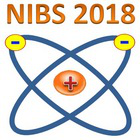Speaker
Dr
Emanuele Sartori
(Consorzio RFX - Università di Padova)
Description
Understanding the distribution of caesium by plasma within the expansion region of the SPIDER beam source is essential to maximise the efficiency of negative ion surface-production. The caesium is redistributed by plasma diffusion and is greatly affected by the plasma-wall interactions with the molybdenum walls. This work considers the processes which make up the plasma wall interaction and the transmission of generated particles across the plasma sheath.
An analytic model is set-up for each of the four main processes that occur at the wall: thermal desorption (evaporation), physical desorption (sputtering), backscattering and adsorption, with the latter being most significant. These processes occur in response not only to the wall temperature but also to the influx of particles to the wall, and generate atoms/ions outwards to the plasma bulk which must first cross the collisional plasma sheath and pre-sheath. The probability of re-entering the bulk is measured by a transmission factor, which is calculated specifically for each charge state and process, as it considers the energies at which the process occurs. The transmission factor considers the mean free path of ionising collisions, along with comparing the potential and kinetic energy of each ion with the threshold energy to leave the sheath. The combination of the probability of transmission and the fluxes generated at the wall allows for the study of the redistribution from the plasma discharge within the beam source.
Primary author
Dr
Emanuele Sartori
(Consorzio RFX - Università di Padova)
Co-authors
Dr
Gianluigi Serianni
(Consorzio RFX)
Sophie Danielle Angelica Gorno
(Consorzio RFX - Università di Padova)

